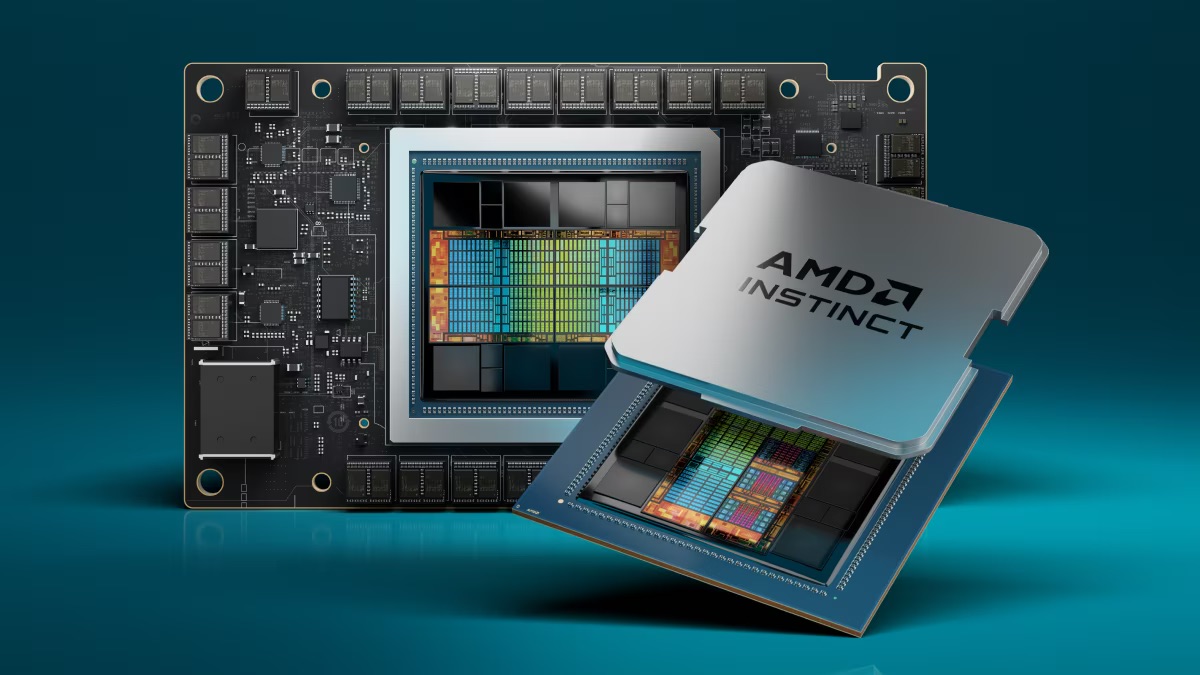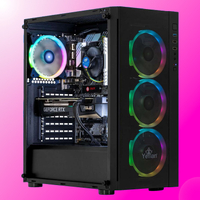AMD's start to 2024: Big gains in client and data center, big falls in gaming
Data, AI, and compute are where all the money is at right now.

Reporting on the financial statements from multi-billion dollar companies isn't our usual fare but when the company in question has a huge impact on the world of PC gaming, it's worth paying attention to how well things are going. AMD's revenue and operating income for the first quarter of 2024 have been announced and it's great news for its big processor sectors but not so great for its gaming division.
In terms of financials, AMD organises everything into four primary sectors: data center, client, gaming, and embedded. Every Ryzen processor made earns money for the client sector, whereas sales of Radeon GPUs and custom chips for consoles and handheld PCs are recorded in gaming.
Throughout the second half of 2022 and the first half of 2023, the client division was losing money quite badly, but for the last six months, things have steadily improved. Compared to this time last year, client revenue has improved by 85% and the operating income has gone from a loss of $172 million to a profit of $86 million. It's a similar story with data center, which has enjoyed gains of 81% and 268% in revenue and operating income, compared to the first quarter of 2023.
In an earnings call, CEO Dr Lisa Su explained why it was doing so well: "The substantial year-over-year growth was driven by the strong ramp of AMD Instinct MI300X GPU shipments and a double-digit percentage increase in server CPU sales."
What isn't doing so well is AMD's gaming division. Revenue is down 33% compared to the previous quarter and 48% compared to 2023; operating income is down by a similar proportion. The bulk of that sector's money comes from the contract with Sony to design and manufacture the processor for the PlayStation 5. Microsoft has the same kind of deal for its Xbox Series X/S machines, and among all of those are Radeon GPUs.
The PS5 was launched back in November 2020, so the console is past the peak of its sales and while the much-discussed PS5 Pro will probably give AMD a little bit of a boost when that comes out, then gaming will probably continue to see a decline in its fortunes as time goes on. Things will only significantly improve when the next generation of consoles appears. AMD doesn't have a big enough share of the discrete graphics card market for its Radeon chips to pull in lots of money.
Not that I think AMD will really care all that much, as long as the gaming division continues to makes a profit. It's far more interested in boosting revenue and operating income in its data center division, thanks to the seemingly endless pots of money being thrown at AI superchips by the likes of Meta, Microsoft, OpenAI, et al.
The biggest gaming news, reviews and hardware deals
Keep up to date with the most important stories and the best deals, as picked by the PC Gamer team.
And lest we all forget, 2024 is the year of the AI PC and with AMD jamming neural processing units (NPU) into every Ryzen it can, there's a good chance that the client sector will do a lot better this year. Given that it's had a rough time of things, and still doesn't make all that much money, AMD will be hoping that all the major OEM and system builders buy a bucket load of AI-capable Ryzen chips for their forthcoming models.
"We believe the market is on track to return to annual growth in 2024," said Dr Su, "driven by the start of an enterprise refresh cycle and AI PC adoption. We see AI as the biggest inflection point in PC since the Internet with the ability to deliver unprecedented productivity and usability gains."
You might not care one jot about AI but AMD clearly does. In just about every question concerning GPUs in the earnings call, gaming was barely discussed—AI and data center are where all the money is.
Best gaming PC: The top pre-built machines.
Best gaming laptop: Great devices for mobile gaming.

Nick, gaming, and computers all first met in 1981, with the love affair starting on a Sinclair ZX81 in kit form and a book on ZX Basic. He ended up becoming a physics and IT teacher, but by the late 1990s decided it was time to cut his teeth writing for a long defunct UK tech site. He went on to do the same at Madonion, helping to write the help files for 3DMark and PCMark. After a short stint working at Beyond3D.com, Nick joined Futuremark (MadOnion rebranded) full-time, as editor-in-chief for its gaming and hardware section, YouGamers. After the site shutdown, he became an engineering and computing lecturer for many years, but missed the writing bug. Cue four years at TechSpot.com and over 100 long articles on anything and everything. He freely admits to being far too obsessed with GPUs and open world grindy RPGs, but who isn't these days?


